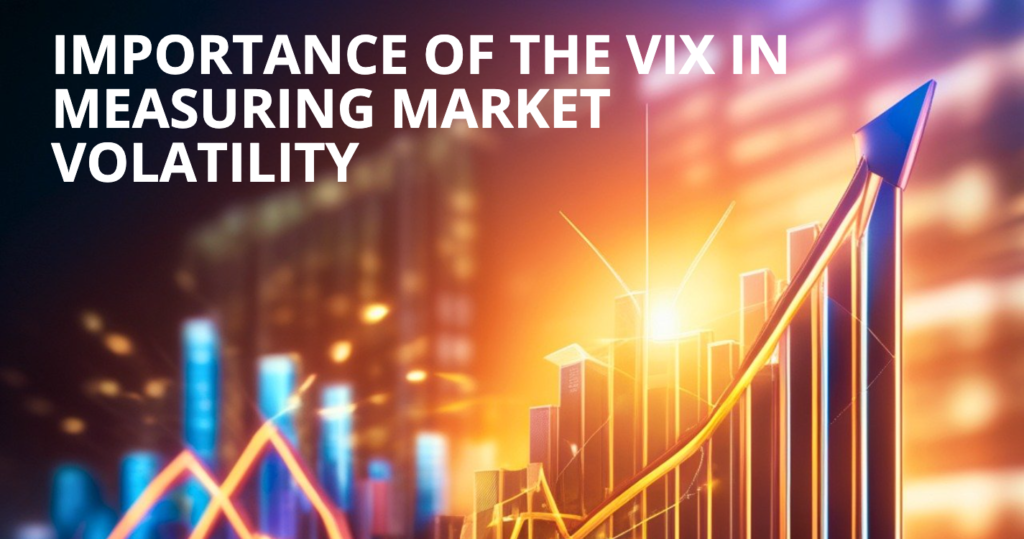The VIX, often dubbed the “fear gauge,” is a key indicator for investors looking to understand market volatility. By reflecting the market’s mood swings—whether anxious or calm—it offers a glimpse into the potential ups and downs of the stock market. But how does it work, and why should we care? Let’s dive into the essentials of this intriguing index. Gain insights into the Volatility Index and market fluctuations by leveraging the expert connections available through Bitcoin Buyer.

The Mechanics Behind the VIX: How It Is Calculated
The VIX, or Volatility Index, often gets mentioned in finance conversations, but how exactly is it calculated? At its core, the VIX measures market expectations of near-term volatility. It does this by analyzing the prices of S&P 500 index options, which are financial contracts that give investors the right to buy or sell the index at a specified price before a certain date.
Think of it this way: when investors expect big market swings—whether up or down—they’re more likely to buy options as a form of protection or speculation. This increased demand raises the price of options. The VIX takes this data and calculates a number that represents the market’s best guess on how much the S&P 500 might move in the next 30 days. It’s a bit like trying to predict a storm by looking at the speed and direction of the wind.
Now, you might wonder, is this calculation straightforward? Not really. The VIX isn’t a direct measure but a complex formula that involves weighting the prices of multiple options, especially those close to being “at-the-money,” which means the option’s strike price is near the current market price of the index.
It’s like balancing on a tightrope—getting the formula right involves a delicate balance of probabilities and expectations. This index reflects the collective emotion of the market, gauging how anxious or calm traders are about the future.
But here’s a kicker: even though the VIX is often called the “fear gauge,” it’s not always about fear. Sometimes, it’s just about uncertainty or caution. When you see the VIX rising, it doesn’t always mean panic. It could just be investors bracing for the unknown.
Interpreting the VIX: What High and Low Values Indicate About Market Sentiment
When you look at the VIX, it’s like looking at a mood ring for the stock market. High values typically signal heightened anxiety or fear among investors. But why does that happen?
Usually, during periods of financial stress or uncertainty—think of events like the 2008 financial crisis or sudden geopolitical tensions—investors flock to options as a way to hedge against losses. This surge in demand for options drives up their prices, which in turn pushes the VIX higher.
On the flip side, a low VIX value generally indicates a calmer market, where investors expect little volatility. It suggests confidence, maybe even complacency. But here’s the twist: a low VIX isn’t always good news.
Sometimes, it could mean the market is too complacent, ignoring potential risks. It’s like driving without a seatbelt just because the road looks clear—sometimes it’s safe, but it can be dangerously misleading.
Consider this: if the VIX suddenly jumps from a low to a high value, it’s like a weather warning going from “clear skies” to “hurricane incoming.” It could signal a sudden market shock or an unexpected event. However, consistently high VIX values over a longer period might indicate prolonged uncertainty, like during a drawn-out economic downturn.
The VIX as a Predictive Tool: Can It Foresee Market Turbulence?
Many investors look at the VIX as a kind of crystal ball, hoping it will predict market downturns or turbulence. But does it really have that kind of foresight? The truth is, the VIX is more of a thermometer than a weather forecaster. It measures the current level of market anxiety or complacency based on the options market, but it doesn’t tell you what’s going to happen next.
However, there’s a reason why the VIX is closely watched. It often moves inversely to the stock market. When the market takes a dive, the VIX usually spikes. This has led some to believe that a rising VIX can be an early warning signal of market trouble ahead.
For example, before the 2008 financial crisis hit full force, the VIX began to climb, reflecting growing unease among investors. But beware of reading too much into these signals—just because the VIX is up doesn’t mean a crash is imminent.
So, can the VIX actually help you predict future market movements? To some extent, yes. But it’s not foolproof. Think of it as a smoke detector: it goes off when there’s smoke, which could mean a fire, but it could also mean someone burned toast. You need to look around and see what’s really happening.
Conclusion:
The VIX isn’t just a number; it’s a snapshot of market sentiment. While it can’t predict the future with certainty, it gives investors a valuable perspective on potential risks and opportunities. By understanding the VIX, you can better navigate the financial markets, making informed decisions that align with your investment strategy. Always remember: knowledge is power, especially in investing.